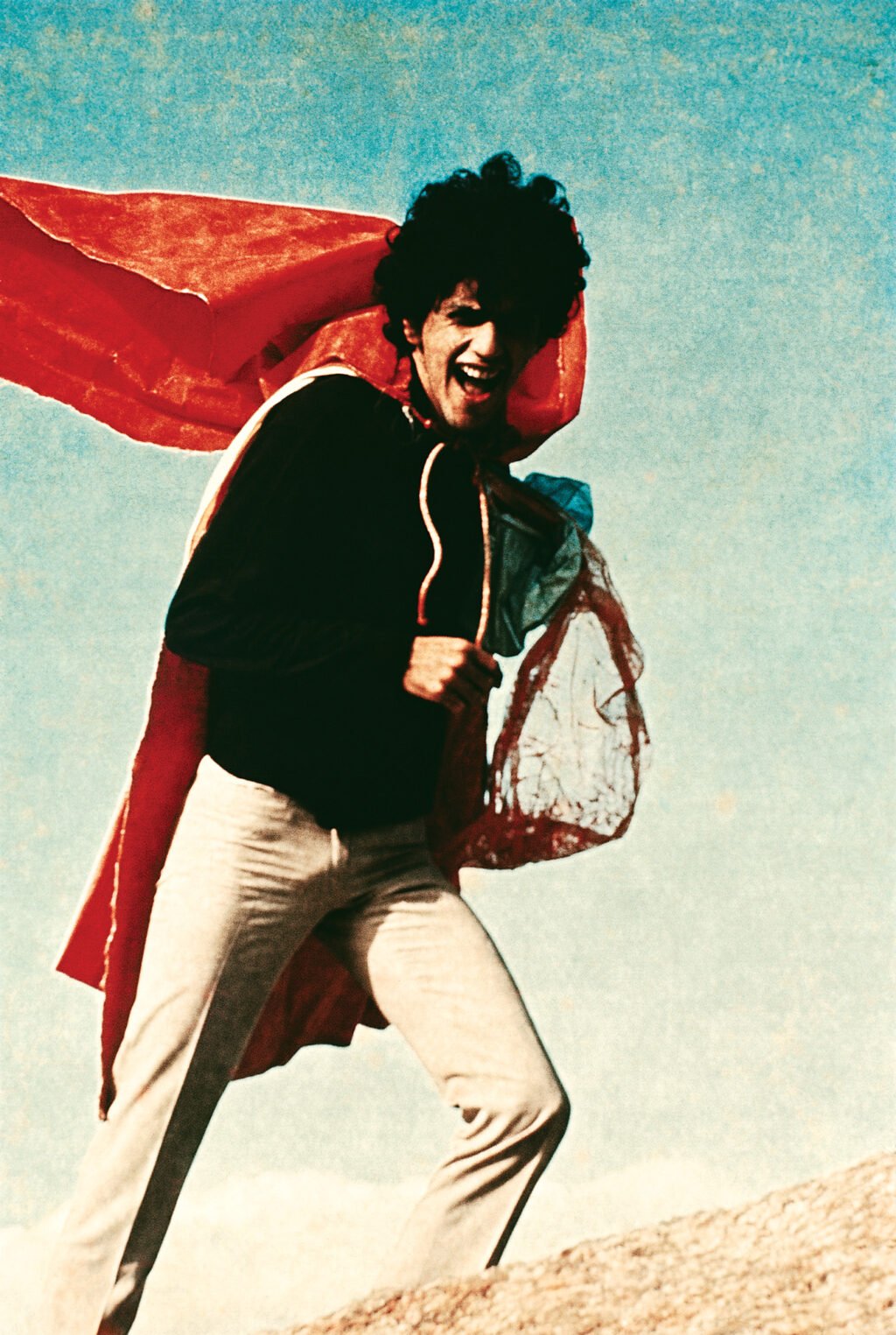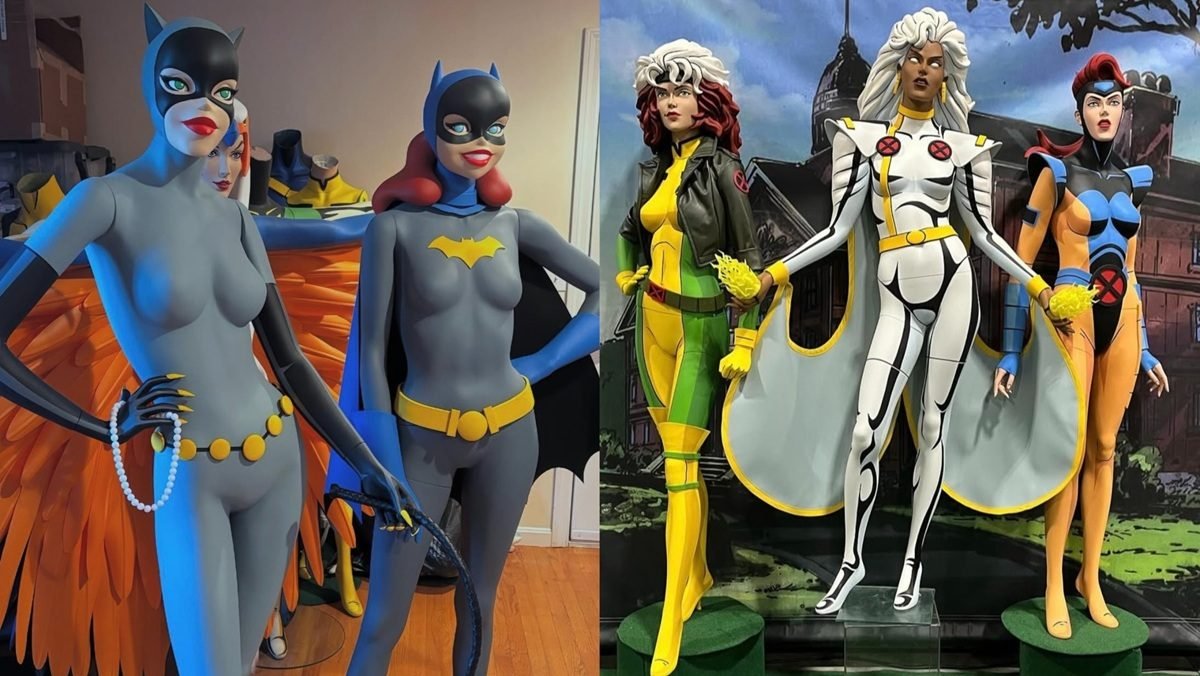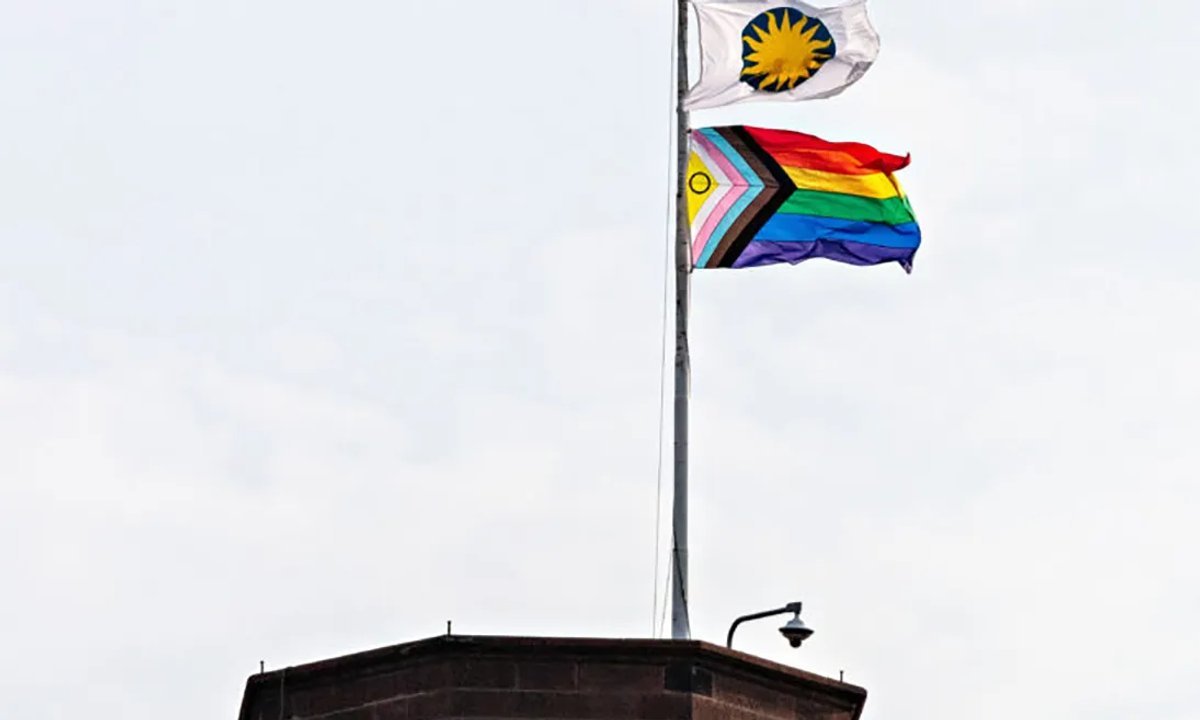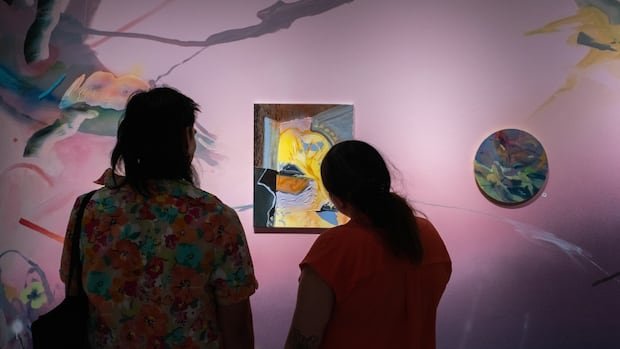The Irving Sandler Essay Series
Edited by Alexander NagelThis essay series, generously supported by Scott Lynn, is named in honor of the art historian and critic Irving Sandler, whose broad spirit was epitomized in the question he would ask, with searching eyes, whenever he met someone or saw someone again: what are you thinking about? A space apart from the press of current events, the Sandler Essay invites artists and writers to reflect on what matters to them now, whether it is current or not, giving a chance for an “oblique contemporary” to come in view.
For much of my adult life, when the world was dark, I turned to art to get me through. In 1995, Lawrence Weschler traced the steps of an official at the Yugoslav War Crimes Tribunal in The Hague, who countered his daily deluge of testimony of torture, rape, and murder with frequent trips to the Mauritshuis to see the Vermeers. Of the artist’s deliberate scenes of serenity Weschler wrote, “It’s almost as if Vermeer can be seen, amid the horrors of his age, to have been asserting or inventing the very idea of peace.”
Beyond my local Vermeers, I built a list of artworks and installations, more or less permanent, that I could visit or contemplate when needed: Janet Cardiff’s Forty Part Motet (2001), which became the cathartic kaddish for the city when it appeared at PS1 in October 2001; the Rothko Room at the Phillips Collection; the Phillips’s half of “The Migration Series” (1940–41) by Jacob Lawrence; the procession of energized nothingness around Barnett Newman’s “Stations of the Cross” (1958–66) at the National Gallery; Reynier Leyva Novo’s 2016 temporary exhibition at the Hirshhorn Museum of monochromes made from the ink of totalitarian texts, which was left in place through the entire Trump administration. Whether it was solace, escape, insight, or invigoration, I connected with an expanding constellation of artworks that gave me respite—until they didn’t.
The pandemic’s swirling gyre, genocide in Gaza and indifference to it, persistent bigotry and ascendant fascism in the US and beyond—all thwart any attempt to retreat into art. The stresses of the world follow me even to the farthest pavilions of Glenstone, our beneficent local billionaire’s sprawling art refuge. As for the contemporary art world of galleries, fairs, and biennials which has long occupied so much of my attention, freshly exposed political conflicts and staggering leaps in inequality leave an elite subculture of decorative distraction feeling more superficial and complicit than ever.
Mostly, though, it’s the fascism. In this country, Donald Trump and the political party he controls have steadily ratcheted up the specific extremist actions they’ll pursue as soon as they get back in power. The growing list includes stripping reproductive and bodily autonomy; mass incarceration and deportations; deploying the military against citizens; purging and dismantling government agencies; quashing universities, media, and other potential sources of independent critique; enshrining evangelical white male hegemony deeper into law; and intensifying the threat against people of color, LGBTQ+, immigrants, refugees, the disabled, and the poor. So if art’s not hitting quite the same as it used to, maybe that’s part of the reason.
Maybe this is a time to look for something else in art, to look at art that resonates with this moment on the precipice of authoritarianism, and to learn from it. What can be gleaned by reconsidering art made in similarly dangerous situations in the past, not with the complacent relief of historical distance, but with an awakened sense of urgency for our own time and place? With that in mind, some of the first artworks I revisited were actually European, made in historical moments whose peril had been lost on me. Francisco Goya’s The Third of May 1808 (1814) eventually became a modern icon of anti-tyranny, but like much of Goya’s work around the Peninsular War of 1808–14, rapid political shifts and repression made it too dangerous to exhibit during the artist’s life. When Napoleon invaded and installed his brother on the Spanish throne, Goya sought to remain a court artist. To keep working, he traveled to sites of battle or siege and privately documented the atrocities he saw. Third of May and other paintings commemorating Spanish resistance to the French invasion were commissioned by the government in 1814, during a brief moment of openness when Goya thought he could also publish his “Disasters of War” series of battlefront etchings. That window slammed shut when King Ferdinand VII returned to power. The paintings were warehoused in the Prado, the printing plates stashed away, and Goya retreated from public practice, painting the walls of his own house. This is all long-documented art history, but until now the posthumous narrative of Third of May’s significance occluded my fuller sense of the precarity that dogged Goya as he worked. Maybe sometimes in a volatile political situation, survival is success enough.
With Trump and other Republican politicians mirroring Nazi rhetoric and policies, revisiting the experience of artists under Nazi rule feels unnervingly relevant. When the Nazis came to power in 1933, Minister for Public Enlightenment and Propaganda Joseph Goebbels established the Reich Chamber of Culture, whose seven divisions took control of cultural production across Germany, instituting racial and political tests for people working in literature, press, broadcasting, theater, music, film, and the visual arts. Käthe Kollwitz, one of the best-known artists in Germany at the time, lost her job at the Prussian Academy of Art, and was forbidden from exhibiting her work. Fearing repercussions against her family if she fled the country, Kollwitz stayed in Germany and suffered there. Her resolutely humanist art depicting the suffering of women and children was both targeted as part of the Nazi’s national Entartete Kunst (Degenerate Art) campaign, and appropriated by them—without permission or credit—for their own propaganda. Unable to show her prints, Kollwitz turned to sculpture; the most significant work she made was a gravestone. Her grandson was conscripted and killed on the Russian front. Her house and studio were bombed, and most of the art she held was destroyed. She died in 1945. Her work, meanwhile, was carried abroad by the German diaspora to Switzerland and the US, where it was collected and shown. In timely fashion, a MoMA retrospective of her work opened in March.
In his 1997 history “On Censorship in the Visual Arts in Nazi Germany,” Christoph Zuschlag traced the Entartete Kunst/Degenerate Art project’s objectives of fomenting nationalist outrage and generating “popular support for the planned war in the East as well as the mass murder of the Jewish people.” With a catchall term condemning modernism as foreign, “Bolshevist,” and “Jewish,” the Nazis seized thousands of “degenerate” artworks from museums and private collections in waves, effecting, “a systematic liquidation of modern art in the whole of Germany.”
Even modern artists who supported the Nazis and curried their favor were not safe from censorship. Beginning in 1933, Emil Nolde, an enthusiastic anti-Semite and eugenicist, promoted what might be called Aryan Expressionism directly to Goebbels and Hitler, to no avail. Over a thousand Nolde works were confiscated from museums, and he ended up with twenty-seven works in the Entartete Kunst exhibition—more than anyone else. After the war and until only very recently, Nolde, his family, and his foundation after his death, largely succeeded in burying his Nazi past.
Marcel Duchamp’s La Boîte-en-valise (1935–41) is a foundational artwork for me, yet I’ve changed my perception of it after reconsidering its genesis. As scholars from Ecke Bonk to Francis Naumann have long documented, Duchamp was engrossed in producing the elements for his Boîte-en-valise at the exact moment Germany invaded France in 1940. Even as he fled to Bordeaux just before Paris was under attack, Duchamp was busy sourcing pochoir and paper stock and soliciting subscriptions for his planned deluxe edition. Back in occupied Paris he complained about Nazis requisitioning all the valise leather. In 1941 he posed as a cheese dealer to travel to Vichy, France so he could smuggle his crates of boîte materials into Peggy Guggenheim’s art shipment leaving from Grenoble. Unsuccessful in persuading his lover, the American bookbinder Mary Reynolds, to flee with him, Duchamp left for New York by ocean liner in early 1942, where he began assembling his Boîtes. Reynolds stayed behind to run a French Résistance cell with Francis Picabia’s daughter. With the Gestapo hot on her trail for six months, Reynolds fled to Spain, where her brother had arranged a pre-paid ticket on Pan Am’s Yankee Clipper. Reynolds crossed the Pyrenees on foot, carrying only a rucksack and a roll of paintings she’d been preserving for her friend Man Ray. While she was still recuperating at the Waldorf and debriefing the OSS (Office of Strategic Services), a pseudonymous account of her escape was published in three parts in The New Yorker. Although this is well documented in books I’ve read for years, I now have a freshly sharpened awareness of the surging violence Duchamp experienced as he went to such extraordinary lengths to realize Boîte-en-Valise. Now I’ll never be able to see one without thinking of Duchamp cursing Nazis and scrambling to shrink his life’s work enough to fit into a go-bag.
Whole generations of South American artists who resisted, endured, and escaped fascist dictatorships—mostly US-backed—have, in recent decades, been rewritten into art history. Right now the work they made about the oppression they faced can do more than just entertain and delight. Hélio Oiticica developed his wearable “Parangolés” in the 1960s as instruments of personal bodily freedom just as Brazil’s military dictatorship intensified its censorship of artists and musicians. His installation Tropicália (1967–69), an artificial beach of potted plants and favela-inspired private spaces, invited hanging out while critiquing Northern stereotypes of Brazil as a paradise. Tropicália took on an added resonance in 1969 when Oiticica installed it at the Whitechapel Gallery in London. Children played in the sand without realizing it echoed the site of a beachfront concert held before Oiticica left Brazil in exile, in 1969. In a film of the concert made by Glauber Rocha, singer Caetano Veloso performs in a Parangolé as police raid the gathering. Veloso and Gilberto Gil were imprisoned for two months, then compelled to leave the country, as was Rocha. The film was shown at MoMA in 2014, alongside the retrospective of another exiled artist, Lygia Clark. The next year, in 1968, Brazilian artists in Paris launched cultural resistance efforts against the dictatorship, persuading France and many more countries, including the US, to oppose the regime’s oppression of artists by boycotting the tenth São Paulo Biennial.
In a secret meeting in 1976, US Secretary of State Henry Kissinger urged the leaders of the military coup that seized power in Argentina to eliminate their opposition quickly before human rights abuses became an issue in the US media. Over the next seven years, the so-called Dirty War waged against perceived enemies to the military regime resulted in up to 30,000 people being “disappeared,” which is to say abducted and killed, by the government. Pregnant prisoners were kept alive only long enough for their children to be born and given to military families. Mothers and grandmothers of los desaparecidos began to stage silent weekly protests at the Plaza de Mayo in Buenos Aires. From his home in La Plata, outside Buenos Aires, artist Edgardo Antonio Vigo developed an international mail art network during the Dirty War, in collaboration with Graciela Gutiérrez Marx. Their “artistamps” called for the release of Vigo’s son Palomo, a desaparecido. Vigo and Marx’s mail objects were sometimes seized by the post office, but their correspondence was extensive enough to regularly evade government censorship. They also connected with the Mexican artist Ulises Carríon, whose alternate postal system—artists and colleagues hand-delivering mail art around the world—was intended to thwart censorship and surveillance. Through such ad hoc and alternative methods, the artists raised awareness abroad of the Argentine regime’s oppression, and the disappearance of Vigo’s son. MoMA staged an exhibition of Vigo and Marx’s handmade mail objects in 2014.
In 2015, while her house in Cuba was surrounded by police because she had called for an international boycott of the Havana Biennial, artist Tania Bruguera organized a one-hundred-hour reading of Hannah Arendt’s The Origins of Totalitarianism. The project, Where Your Ideas Become Civic Actions (100 Hours Reading The Origins of Totalitarianism), was restaged in February 2024 at the Hamburger Bahnhof in Berlin. Between the invitation in 2022 and the performance, German cultural institutions have been roiled by criticism for censoring supporters of Palestinians or those calling for the Israeli government to be held accountable for the devastation, starvation, and violence it has visited on the lives of millions of civilians in Gaza. In a podcast interview with The Art Newspaper’s Ben Luke just before the Berlin performance, Bruguera described the piece as “Art for the Not-Yet, which is actually creating art that does not react to power, but tries to imagine what power is going to do, and make them react to what you do.” On the performance’s fourth day, activists who had signed up to participate called for Palestinian liberation, and were ejected by the museum. When they returned to criticize Bruguera and the curators, the museum shut down the entire performance.
Discussing accusations of anti-Semitism by organizers of Documenta Fifteen in 2022, and by the selection committee of the next Documenta, which led the entire committee to resign in protest, Bruguera commented:
It’s interesting how countries in these so-called centers of power—they don’t see how they can learn from people in the Global South. Maybe now that there is a lot of censorship here, and cancellations in Berlin and Germany, and people are being questioned for their political beliefs and so on, maybe they should look at other places this has happened before, and see what strategies they had, or what is coming on after this. Because I think this is a beginning.
In 2015, Annalee Flower Horne made a pronouncement that has gone viral as a tweet-sized dictum: “Dystopian fiction is when you take things that happen in real life to marginalized populations and apply them to people with privilege.” It is turning out to be prophetic for the many privileged Americans who imagine they would be unaffected by a second coming of Donald Trump.
In a 2013 Creative Time report called “Turnkey Tyranny,” artist Trevor Paglen warned of unchecked government access to the vast digital apparatus of surveillance and control our society has built. Since then, the growing flood of data from our phones and laptops has been steadily matched by the computing power deployed to analyze it. Meanwhile, the character of basic notions of identity, privacy, media, and international borders have changed so dramatically that previous artists’ responses to autocracy—going underground, leaving the country, changing jobs, mailing things—seem like romantic stories of a simpler age. No one now is beyond the reach of a fascist or his mob determined to ruin your life—or end it. It is imperative, then, to recognize the resurgence of authoritarianism, to push back wherever we see it, and wherever we can, and to devise new techniques to thwart it.
The decades of effort to expand art’s narrative beyond what Bruguera calls the “centers of power,” to engage the cultures and perspectives of the previously marginalized, oppressed, ignored, and erased, mirrors the same efforts in US culture more broadly. Like William Gibson’s future, diversification is here, but unevenly distributed. The artists and artworks from the Global South, and from others who have been visited with dictatorship and colonial oppression, are more accessible than ever before. And there has never been a more urgent time for people in centers of power to listen to these voices, to meditate on their experiences, and to heed their warnings.






